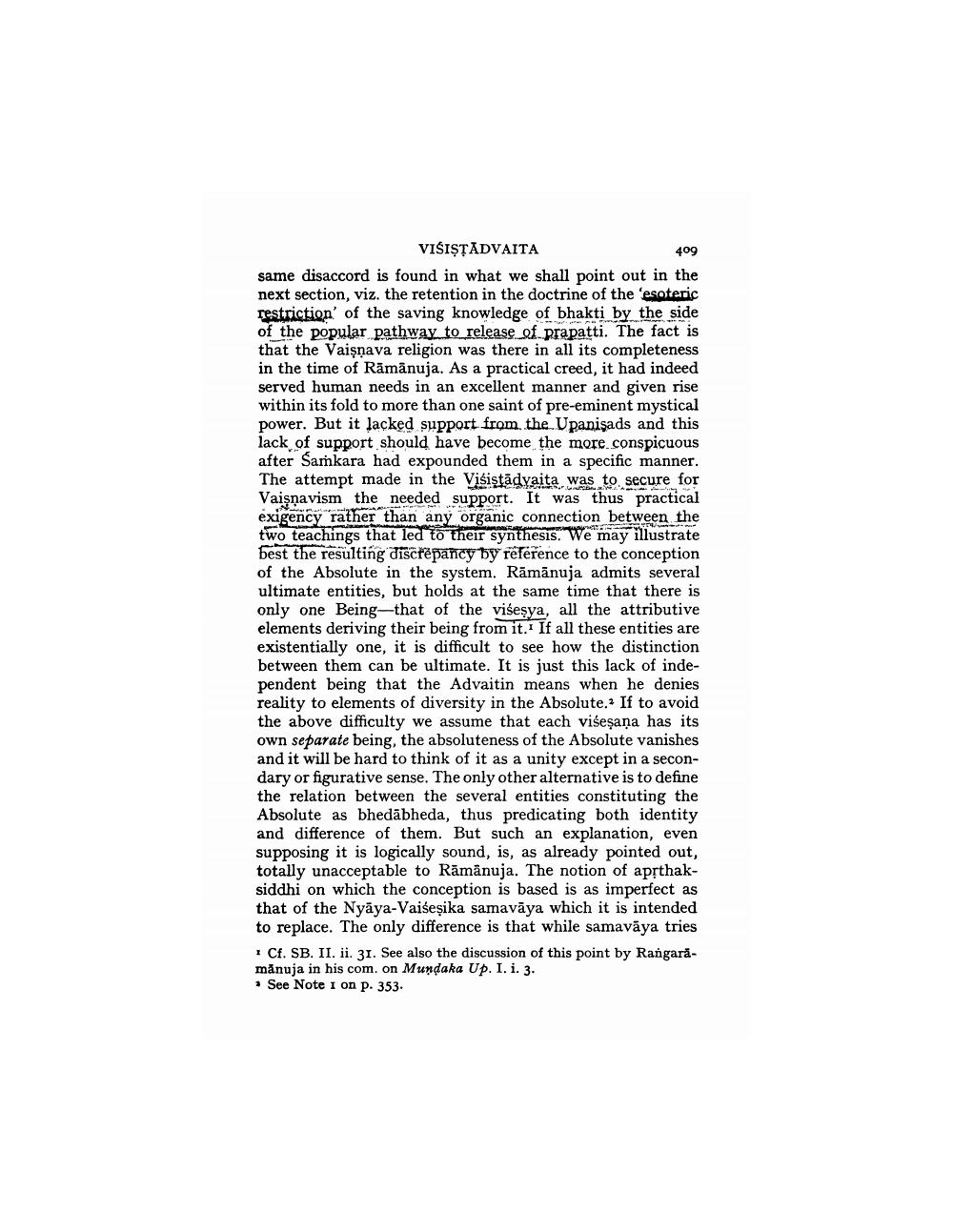________________
VISISTĀDVAITA
409 same disaccord is found in what we shall point out in the next section, viz. the retention in the doctrine of the 'esoteric restriction of the saving knowledge of bhakti by the side of the popular pathway to release of prapatti. The fact is that the Vaisnava religion was there in all its completeness in the time of Rāmānuja. As a practical creed, it had indeed served human needs in an excellent manner and given rise within its fold to more than one saint of pre-eminent mystical power. But it lacked support from the Upanişads and this lack of support should have become the more conspicuous after Samkara had expounded them in a specific manner. The attempt made in the Visiştādyaita was to secure for Vaisnavism the needed support. It was thus practical exigency rather than any organic connection between the two teachings that led to their synthesis. We may illustrate best the resulting discrepancy by reference to the conception of the Absolute in the system. Rāmānuja admits several ultimate entities, but holds at the same time that there is only one Being—that of the višeşya, all the attributive elements deriving their being from it. If all these entities are existentially one, it is difficult to see how the distinction between them can be ultimate. It is just this lack of independent being that the Advaitin means when he denies reality to elements of diversity in the Absolute. If to avoid the above difficulty we assume that each višeşana has its own separate being, the absoluteness of the Absolute vanishes and it will be hard to think of it as a unity except in a secondary or figurative sense. The only other alternative is to define the relation between the several entities constituting the Absolute as bhedābheda, thus predicating both identity and difference of them. But such an explanation, even supposing it is logically sound, is, as already pointed out, totally unacceptable to Rāmānuja. The notion of aprthaksiddhi on which the conception is based is as imperfect as that of the Nyāya-Vaiseșika samavāya which it is intended to replace. The only difference is that while samavāya tries 1 Cf. SB. II. ii. 31. See also the discussion of this point by Rangaramānuja in his com. on Mundaka Up. I. i. 3. · See Note I on p. 353.




